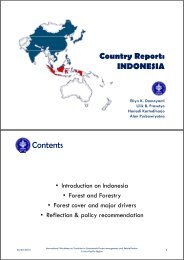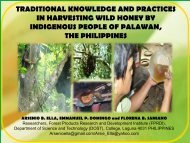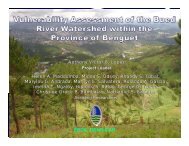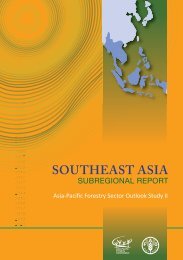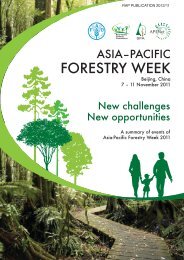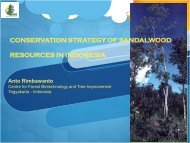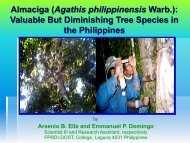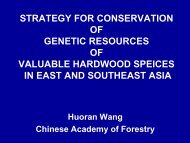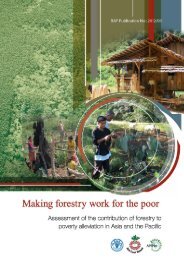Community guidelines for accessing forestry voluntary carbon ... - FAO
Community guidelines for accessing forestry voluntary carbon ... - FAO
Community guidelines for accessing forestry voluntary carbon ... - FAO
Create successful ePaper yourself
Turn your PDF publications into a flip-book with our unique Google optimized e-Paper software.
Chapter 2: VCM project types and standards<br />
Box 8: <strong>FAO</strong> <strong>for</strong>est definition<br />
Land with tree crown cover (or equivalent stocking level) of more<br />
than 10 percent and area of more than 0.5 ha. The trees should be<br />
able to reach a minimum height of 5 m at maturity in situ. The area<br />
may consist either of closed <strong>for</strong>est <strong>for</strong>mations where trees of various<br />
storeys and undergrowth cover a high proportion of the ground; or<br />
open <strong>for</strong>est <strong>for</strong>mations with a continuous vegetation cover in which<br />
tree crown cover exceeds 10 percent. Young natural stands and all<br />
plantations established <strong>for</strong> <strong>for</strong>estry purposes which have yet to reach<br />
a crown density of 10 percent or tree height of 5 m are considered<br />
<strong>for</strong>ests, as are areas normally <strong>for</strong>ming part of the <strong>for</strong>est area which are<br />
temporarily unstocked as a result of human intervention or natural<br />
causes, but which are expected to revert to <strong>for</strong>est.<br />
Includes: <strong>for</strong>est nurseries and seed orchards that constitute an integral<br />
part of the <strong>for</strong>est; <strong>for</strong>est roads, cleared tracts, firebreaks and other<br />
small open areas; <strong>for</strong>est in national parks, nature reserves and other<br />
protected areas such as those of specific scientific, historical, cultural<br />
or spiritual interest; windbreaks and shelterbelts of trees with an area<br />
of more than 0.5 ha and width of more than 20 m; plantations primarily<br />
used <strong>for</strong> <strong>for</strong>estry purposes, including rubberwood plantations and<br />
cork oak stands.<br />
Excludes: Land predominantly used <strong>for</strong> agricultural practices<br />
Source: <strong>FAO</strong> http://www.fao.org/docrep/006/ad665e/ad665e06.htm<br />
2.7.2 Voluntary market<br />
The <strong>voluntary</strong> market has multiple standards to choose from. Professional<br />
help and advice may be needed to learn about the various standards of<br />
61




